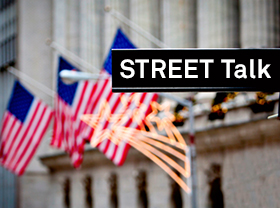The Financial Accounting Standards Board's new reserve methodology is unlikely to achieve its goal of helping the U.S. banking industry build reserves ahead of the next downturn thanks to the proposed delay in implementation for the vast majority of institutions.
In the latest Street Talk podcast
After years of debate, FASB created the current expected credit loss model, or CECL, with an eye to speed up the recognition of problems by requiring institutions to reserve for estimated losses at origination as opposed to building allowances when a loss is probable.
Many bankers expect CECL to boost reserves at adoption, but we have argued that institutions are unlikely to build allowances enough to prepare for an economic downturn. That almost certainly will be the case for the vast majority of institutions in the U.S. banking industry, since FASB has now proposed delaying their implementation to 2023 — beyond the likely turn in the credit cycle.
If finalized, smaller reporting companies, or SRCs, and private companies would have until January 2023 to implement CECL. The SEC defines an SRC as a company having a public float of less than $250 million, or one that has annual revenue less than $100 million with either no public float or a public float of less than $700 million.
Street Talk is a podcast hosted by S&P Global Market Intelligence. Listen on SoundCloud |
Nearly 4,800 banks would qualify for that delay, representing more than 92% of institutions in the industry, S&P Global Market Intelligence found. The analysis included currently operating banks and thrifts and SRC-qualifying criteria based on June 30 public floats and full-year 2018 revenue for most companies.
Most of the banks qualifying for a delay are small. Collectively, they held less than 10% of the industry's assets, meaning that variance in performance is unlikely to have a large impact on the financial system. Small institutions also maintained stronger credit quality than their larger counterparts during the Great Recession.
Still, the proposed delay in CECL implementation means most U.S. banks will continue reserving under the existing incurred model for 3.5 more years. That means reserves should remain low until the credit cycle truly turns. The current economic expansion is already the longest on record and few investors and economists expect it to last until 2023.
Tony Crescenzi, market strategist and portfolio manager at PIMCO, recently told us that investors are already "looking around the corner at the potential for recession and applying some probability of recession."
Economists are not that optimistic about the future, either. The Wall Street Journal's monthly survey of more than 60 economists showed in June that 49% of respondents expect the next recession to occur in 2020, followed by 36.6% expecting it in 2021. Just 2.4% of economists predict that a recession could occur in 2023, the new CECL implementation time frame for most banks.
Bankers also recognize that the cycle will eventually turn. Paul Murphy, CEO of Cadence Bancorp. — which just reported a spike in charge-offs largely due to four credits — said he is not calling for a recession but is keeping a watchful eye given the length of the current cycle.
"I'm not calling for a recession. But I know that the longer we are in a cycle, the possibility of a recession is something that we have to look at," Murphy said on his company's second-quarter earnings call, adding that the bank has decided to take a more conservative view of leverage in its loan portfolio.
Given the likelihood of a downturn occurring sometime in the next three years, most banks will not have changed the way they reserve ahead of the next recession. While there has been plenty of debate over whether or not CECL will be a countercyclical measure, it will certainly fall short of doing so if not enacted before the cycle turns.
The nation's largest institutions, however, will begin adopting the standard in 2020, creating two groups across the banking industry. In the coming years, CECL critics likely will have the opportunity to look at big banks' performance and compare them to thousands of smaller banks to see how the standard holds up in a downturn.




